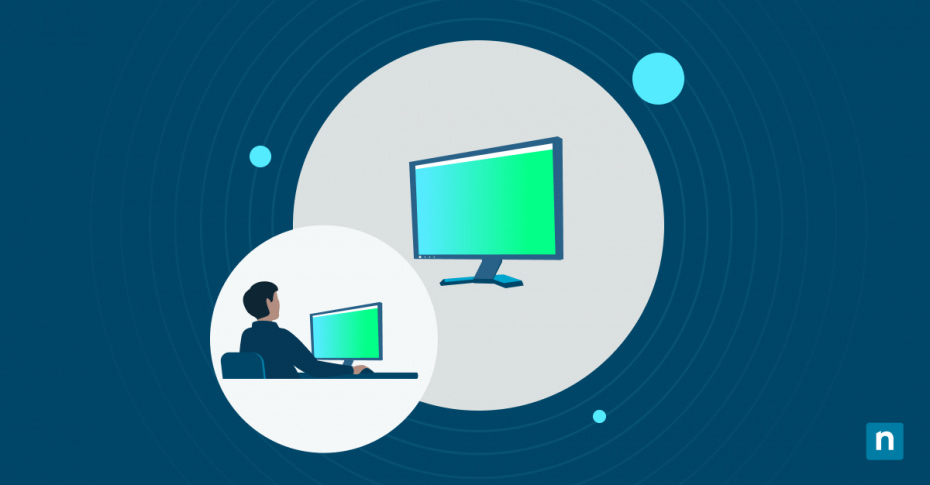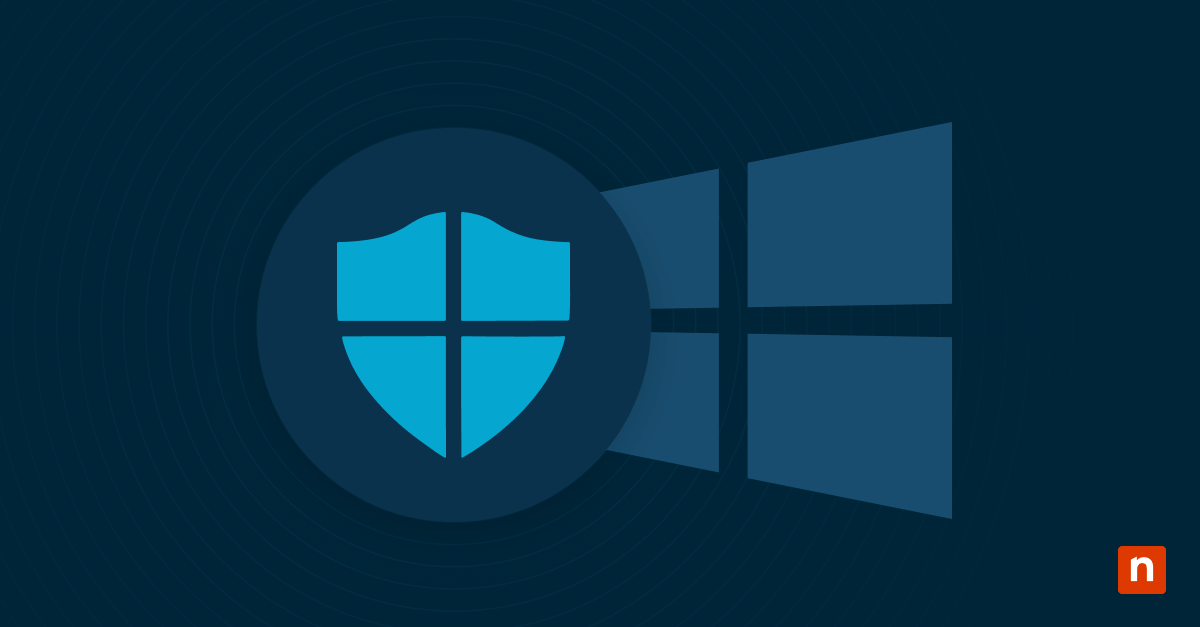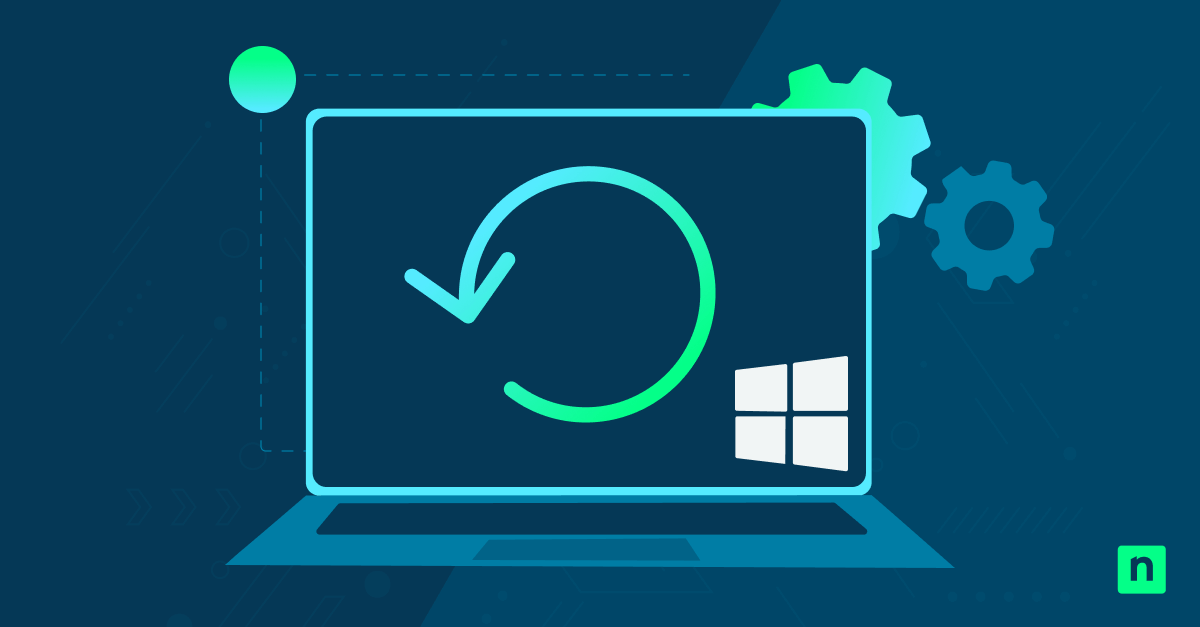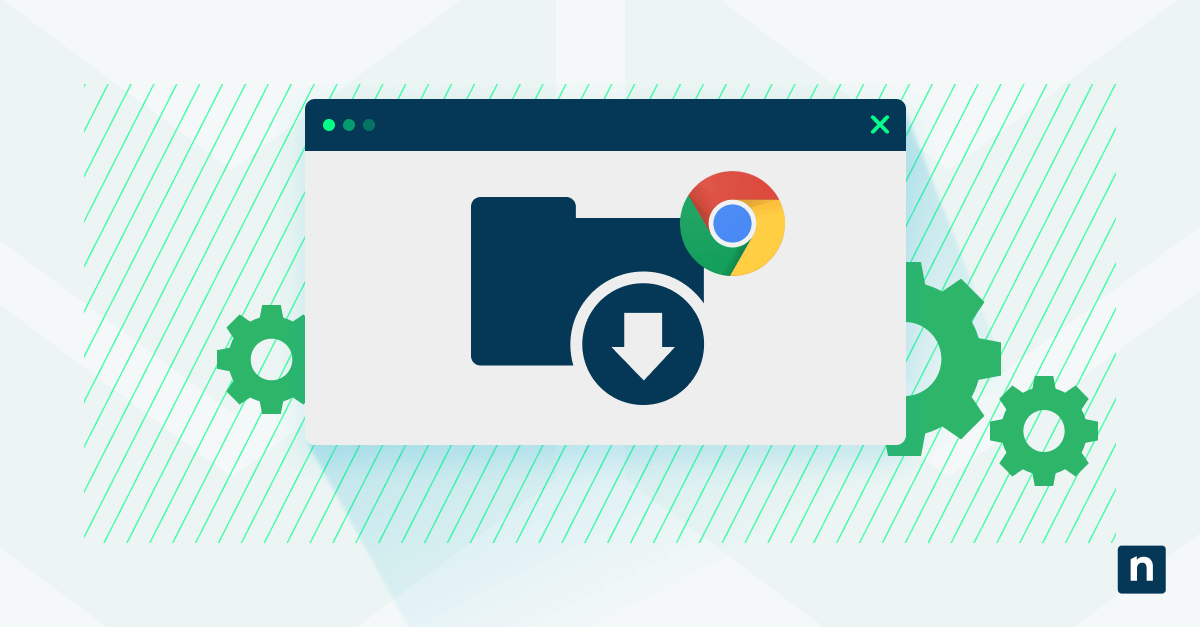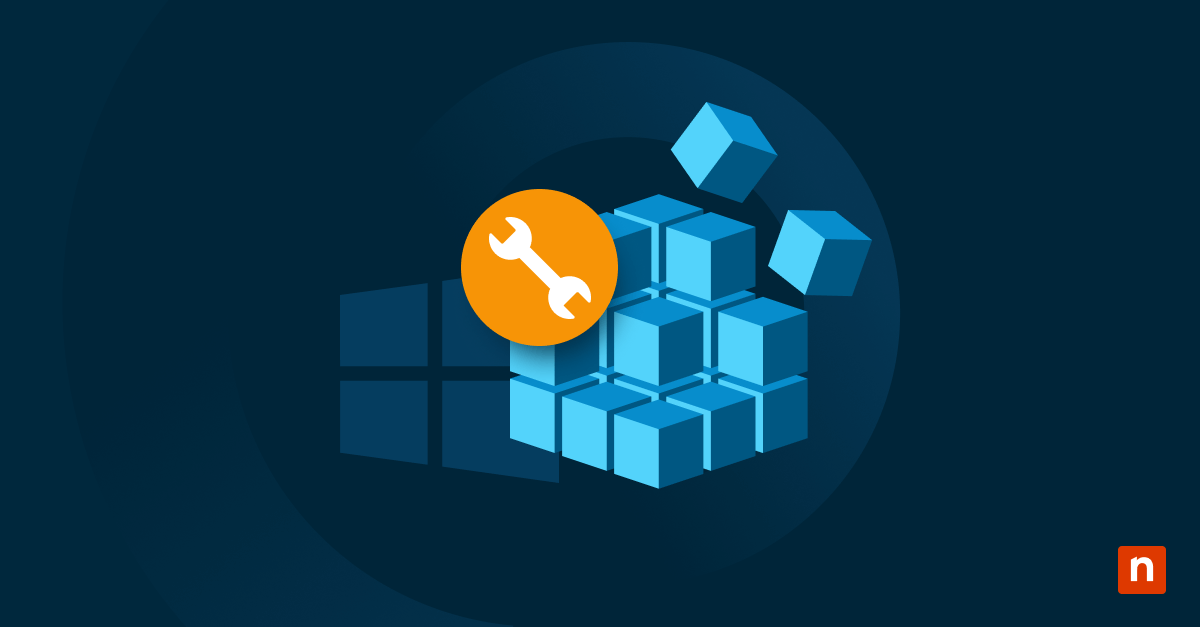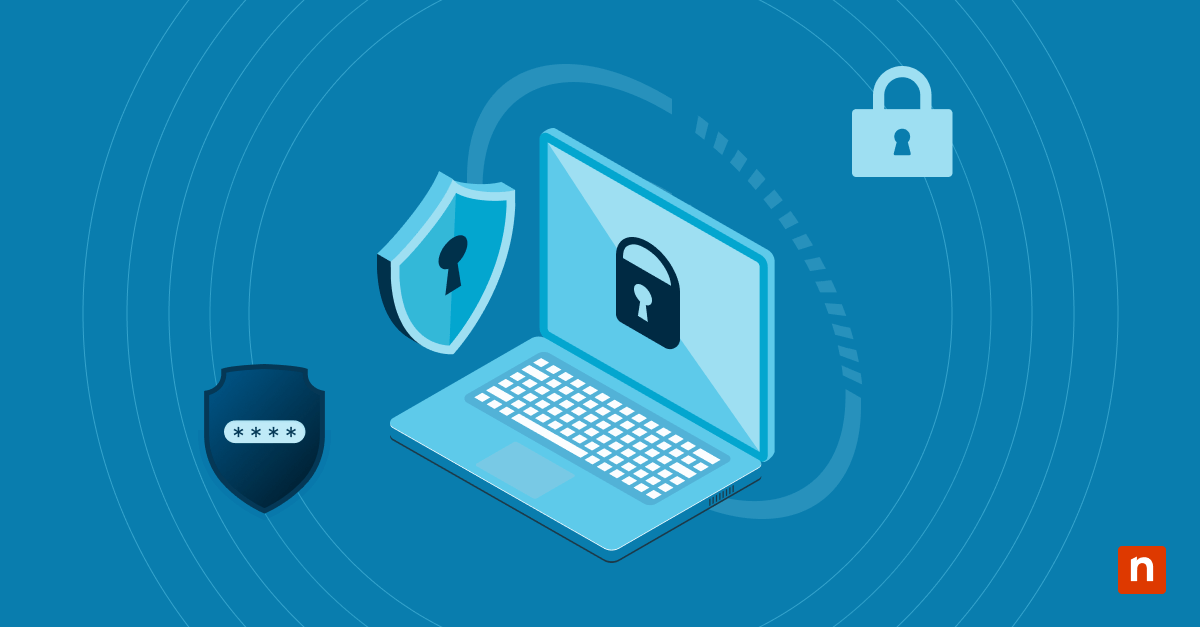In this article, you learn how to prevent a device from waking your computer in Windows 10. That mysterious 3 a.m. computer startup might not be a ghost in the machine after all. From scheduled maintenance to misbehaving network cards, Windows 10 devices can wake your computer for various reasons. Adjusting these wake settings converts your system from an unpredictable rebel into a well-behaved corporate asset.
Why devices wake your computer in Windows 10
Unplanned wake events disrupt maintenance schedules and consume unnecessary resources across your network. Understanding why varying devices might wake your computer in Windows 10 can help you make the necessary changes to avoid these issues.
About wake triggers
Windows 10 uses Power Management Information Commands (PMICs) to allow a device to wake your computer. These commands coordinate between hardware components, software services, and Windows power policies to determine when a system should wake from sleep or hibernation.
Device drivers monitor specific wake patterns and respond based on their configured power states and priority levels, while Modern Standby enables instant-wake functionality for critical notifications even in low-power states.
Common wake sources
The Windows Task Scheduler handles everything from Windows Updates to backup operations. Network adapters extend this capability through Wake-on-LAN magic packets, which enable remote management and support. Your IT team should monitor these common wake triggers:
- Scheduled maintenance tasks that perform system cleanup and optimization.
- System updates that require immediate installation or reboots.
- Network-based wake requests from management tools and monitoring systems.
- Connected standby notifications that maintain business continuity.
- Help desk support tools requiring remote access capabilities.
Default wake behaviors
Windows 10 includes preset power management policies that determine when your computer wakes from sleep. These default behaviors focus on two main areas: scheduled system maintenance and application-based wake requests. Windows automatically schedules maintenance windows to perform essential tasks, while certain applications receive permission to wake your system when they need to complete important operations.
Wake pattern analysis
Windows 10 provides robust tools for monitoring and analyzing wake events through Event Viewer logs and PowerCFG command-line utilities. These tools give you detailed wake configuration options and historical data to help you maintain control over your environment. Analyzing these logs regularly can reveal:
- Unauthorized wake events that might indicate security concerns or misconfigurations.
- Pattern anomalies that suggest potential driver or hardware issues.
- Resource consumption patterns during wake cycles.
- Impact of wake events on system performance and availability.
- Configuration conflicts between different wake sources.
How to stop your computer from waking up in Windows 10
Windows 10 provides granular controls to prevent unwanted wake-ups while preserving essential functionality. Here’s how to manage this controls:
Identify unauthorized wake events
The powercfg /lastwake command reveals the source of your system’s most recent wake event. Pairing this with the powercfg /waketimers command displays all active wake timers in your environment. When combined with the Event Viewer’s system logs, these tools create a comprehensive view of wake behavior patterns.
You can investigate wake sources through several key commands:
- Execute powercfg /systempowerreport to analyze detailed power and wake behaviors over time
- Review powershell get-eventlog entries for Power-Troubleshooter wake events
- Monitor powercfg /requests to identify active power requests from applications
- Track powercfg /sleepstudy reports for unexpected wake pattern analysis
Disable wake timers
Group Policy settings give you enterprise-wide control over wake timer behavior. Access these settings through the Group Policy Editor under “Computer Configuration > Administrative Templates > System > Power Management > Sleep Settings.” You can manage individual system settings through Power Options in Control Panel.
Manage wake permissions
Device Manager serves as your central hub for controlling which devices can wake your system. Right-click each network adapter, mouse or keyboard to access power management settings. These configurations persist through system updates and provide consistent wake behavior across your environment.
Verify wake settings
After implementing wake restrictions, verify your settings with the powercfg /devicequery wake_from_any command. This validation step makes sure that your configurations match security requirements and business needs. Regular audits of these settings help maintain system stability and prevent configuration drift.
Steps to allow a device to wake your computer in Windows 10
Wake capabilities bridge the gap between always-on availability and efficient power management. Follow these steps to allow a specific device to wake your computers.
Step 1: Configure device wake settings
Open Device Manager to adjust which devices can wake your computer. Right-click the Windows Start button and select “Device Manager” from the menu. You will see a list of all devices connected to your system.
To configure a specific device:
- Navigate to the device category and double-click the device you want to configure.
- Select the “Power Management” tab in the device properties window.
- Check or uncheck “Allow this device to wake the computer” based on your needs.
- Click “OK” to save your changes and repeat for other devices.
For network adapters, you have additional wake options:
- Open the network adapter’s properties in Device Manager.
- Navigate to the “Power Management” tab.
- Select “Only allow a magic packet to wake the computer” for secure remote wake capability.
- Configure “Wake on Magic Packet” in the Advanced tab if available for your adapter.
- Click “OK” to save these network-specific settings.
Step 2: Set wake permissions
Access the Power Key to define custom wake parameters that support your specific operational requirements:
- Modify wake source priorities through registry values.
- Configure wake buffer settings for improved reliability.
- Adjust wake timing parameters for optimal response.
- Set custom wake pattern definitions.
- Enable enhanced logging for wake events.
Step 3: Test wake functionality
Validate wake configurations against real-world scenarios:
- Measure wake reliability during peak network loads.
- Test wake behavior across different network routes.
- Verify wake functionality with encrypted network traffic.
- Document wake success rates through VPNs.
- Monitor power consumption patterns during wake cycles.
Step 4: Troubleshoot wake issues
Implement continuous wake monitoring to maintain optimal system performance. Track key metrics like wake latency, success rates and power consumption to identify potential issues before they impact productivity.
Enterprise wake management strategies
You might face unique challenges when managing wake events across diverse hardware configurations and user requirements in an enterprise. Here are some tips to keep things consistent.
Deploy wake policies
To gain centralized control over your organization’s wake configurations, set standard wake policies every employee must adhere to. You can use Group Policy to accomplish this:
- Create standardized templates that allow a device to wake the computer in Windows 10.
- Implement tiered access controls for wake permissions.
- Configure Network Access Protection for wake packets.
- Deploy wake filters through Windows Defender Firewall.
- Establish wake auditing requirements by department.
Monitor unauthorized wake events
To track which devices or services wake your computer unexpectedly, you need to check both Windows Event Viewer and system power reports. These built-in tools give you immediate insight without requiring additional software investments.
Follow these steps to monitor wake patterns:
- Open Event Viewer and navigate to Windows Logs > System.
- Filter the log to display Power-Troubleshooter events, which show all wake activity.
- Run powercfg /systempowerreport from an elevated command prompt to generate a detailed HTML report of wake events.
- Review the “Wake History” section of this report to identify unauthorized wake sources.
- Document patterns of unexpected wake events for further investigation.
For organizations managing multiple systems, Windows Event Forwarding provides centralized wake event monitoring. Enable this feature through Group Policy to collect wake data from all your Windows 10 devices in one location.
Implement wake restrictions
Use the Windows Task Scheduler and PowerShell to automate your wake restrictions:
- Schedule maintenance windows that align with business operations.
- Create department-specific wake policies.
- Set geographic wake restrictions for global operations.
- Define role-based wake permissions.
- Establish wake blackout periods for critical systems.
Manage power schemes
Through Active Directory, you can deploy customized power schemes that balance system availability with energy efficiency. These schemes integrate with your wake policies to create a comprehensive power management strategy.
Take control of your enterprise wake management with precision and ease. NinjaOne’s remote management platform gives you control of Windows power settings across your entire device fleet. Start your free trial of NinjaOne today and discover how automated wake management can enhance your IT operations while reducing support overhead.

